-
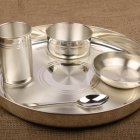 Auspicious Gifts or a Healthy Addition to Your Dining Table, These 10 Best Silver Plates Make for a Great Choice (2020)
Auspicious Gifts or a Healthy Addition to Your Dining Table, These 10 Best Silver Plates Make for a Great Choice (2020)
-
 Dhanteras is Just the Perfect Time to Buy Something for You as well as Others. Send Your Best Wishes, Love, Care and Blessings with These Gift Ideas for Your Dear Ones.
Dhanteras is Just the Perfect Time to Buy Something for You as well as Others. Send Your Best Wishes, Love, Care and Blessings with These Gift Ideas for Your Dear Ones.
-
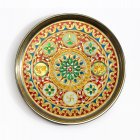 10 Diwali Gift Utensils That Are Perfect To Give To Friends And Family This Diwali(Updated 2019)
10 Diwali Gift Utensils That Are Perfect To Give To Friends And Family This Diwali(Updated 2019)
Traditional Cookware in Modern Kitchens

The Indian population is increasingly becoming aware and has been looking for ways to adopt a healthier lifestyle in the last few years. More recently, the Covid situation has further encouraged this thought process. In their quest for healthier and more sustainable living, many have found answers in the age-old methods of the previous generations. Kitchen being the heart of a household, is obviously the starting point for many trying to go back to traditional ways. Some, for instance, start with getting rid of their non-stick cookware, going back to making chapatis on iron tavas and drinking from copper vessels etc.
Zishta - The Bridge between Rural Artisans and Urban Kitchens
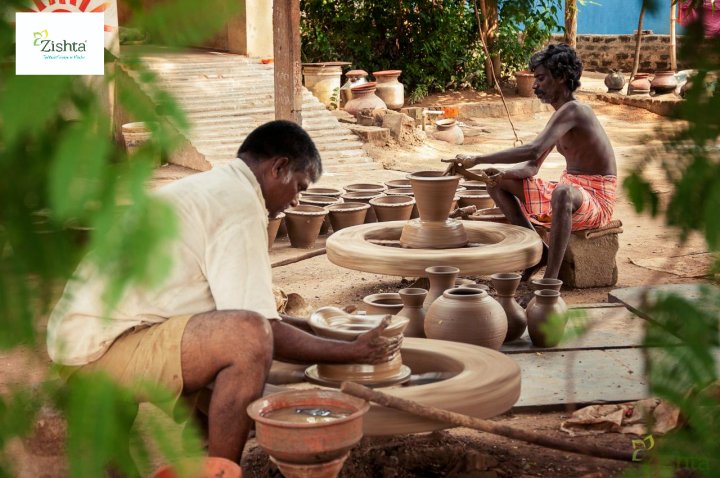
Traditional cookware is still very commonly used in almost every household in the rural parts of the country. However, a big gap observed was the deterioration in the quality of these products over time. Majorly, quality depends on the raw materials being used along with the labor-intensive process of crafting these vessels and cookwares. Another big issue is sourcing these products from the rural artisans and making them available for the urban population. Read on to find out how the three co-founders of Zishta got together to bring about a revolutionary change in the way our kitchens operate.
The Founders’ Journey to a Pioneering Start-Up

Zishta was started with a vision to revive ancient techniques and crafts that are now dying out. These products are not only found to be of high utility value but are environment friendly as well. The founders, Archish Mathe Madhavan, Meera Ramakrishnan and Varishta Sampath have found their calling in guarding the ancient and traditional wisdom and that was how Zishta came into being. Having started with cookware, Zishta now offers a range of furnishing and home-decor products as well, thus offering traditional, more sustainable items for an entire household. Read on to find out more.
While Meera and Archish spent decades in high profile jobs with MNCs, Varishta came fresh out of college with strong determination to make a difference and and helped establish Zishta from scratch. She is an inspiration to many youngsters, who by default are herded into corporate life even when they are yearning for something more satisfying than simply earning money from a nine to five job.
Meera was in the corporate world for 22 years, her last job was director of marketing and strategy in Honeywell. She started her career in the advertising department of The Hindu (newspaper), moving on to Infosys where she did global marketing for 7 years, then another 6 years in GE healthcare as chief marketing officer. She says, "I come from a background where I love stories, history, our culture and science. I love to understand about our culture but try to interlink it with science and bring a more modern meaning to it and more scientific meaning to it."
Archish worked for MNCs for 10 years before quitting his job to start Zishta. He worked with ICICI, moving to GE and then finally to GE healthcare where he was in Meera's team. He is very deep into sustainable living and that’s how he teamed up with Meera to create Zishta. He also brought in his cousin Varishta who wanted to do something more meaningful in life rather than just sit and do a job where you get paid well but aren't doing what you want to do in life.
"Reviving as many ancient crafts, as fast as possible, and helping the survival of the artisans, not just financially but holistic survival, are the most important things for Zishta right now."
Meera Ramakrishnan, co-founder, Zishta
Q&A with Varishta Sampath, Co-founder at Zishta
Co-founder, Zishta Varishta Sampath
Between January and March in 2016 Archish and I did a road trip to all the districts of Tamil Nadu visiting various villages in in the rural parts, Meera was in Honeywell at that time. What we found was that many of the crafts had already died with the artists. For instance, there was one artisan in Mannarkoil who used to make a vessel using 5 metals and when he passed away, that craft was lost with him. This was what we were repeatedly encountering and we just knew we had to try and save other ancient techniques from the same fate. And in July 2016 we started Zishta.
Interviewer BP Guide
Co-founder, Zishta Varishta Sampath
We were seeing crafts that had died, we were seeing crafts that were in the process of dying. The children of these artisans are well educated, many are engineers, but they were very clear they didn’t want to take up their father’s craft. We knew that this was happening everywhere and that was a very painful thing because the generation that was still holding on to it, loved it. They know the benefits of it, they know what they are doing. They were pained that it was going to go away with them. After the road trip we knew we wanted to revive it.
Some of the artisans are socio-economically very poor, some are middle class, and some are very well to do. So, you have all three ranges of artisans. The common imagery associated with a rural artisan, of someone living in a hut and struggling for food, is not true. A majority of them fall in the middle class, it is only a small minority who are not doing so well.
Interviewer BP Guide
Co-founder, Zishta Varishta Sampath
We agreed, and for the first 6 months we travelled the state collecting utensils of clay, iron, cast iron, tin etc in our car and bringing them back to Bangalore. It was only after that the artisans began to take us seriously, because when we present a craft-form we don’t just present the product, we present the craft, we present the artisan.
Interviewer BP Guide
Co-founder, Zishta Varishta Sampath
Take drinking water in copper for example, it is very cliched. Google it and you will be promised beautiful skin, lovely hair, remedy for obesity and diabetes. What the ancient wisdom says is that copper adds prana to water. How does one translate that into science, or for someone who does not believe in ancient wisdom or doesn't understand prana? So we did 3 months of scientific research, read research papers across the globe in every university and in every publication to find out.
Effect of copper on water
- Oligodynamic effect: the oligodynamic effect, or contact killing, is a natural property of copper - it purifies water from germs. The moment you pour water in copper, the copper ions start working and within 30 minutes they start killing viruses and germs.
- Neutralizes the acidity: it neutralizes the acidity in water. Many of us don't realise that water can be acidic in nature and copper neutralizes that.
- Calms water molecules: the molecules of water are highly agitated by the time it reaches your house from the rivers. This is science, it is not traditional wisdom. When you pour water in copper, within a few minutes, the molecules calm down.
- Put together, this mean that we are drinking pure, good water. Purity is very important in essentials like food, water and air. So, when you put pure water into your system, automatically your system is cleaner. It's not a cure all and pure water will not cure obesity or give you beautiful skin if you're always eating pizza. What it can do is ensure that a key element we need to sustain our body, that is water, is pure and good.
Interviewer BP Guide
Co-founder, Zishta Varishta Sampath
Interviewer BP Guide
Co-founder, Zishta Varishta Sampath
In the kitchen we looked at all the products that our grandparents used from across the country. Non Southern India uses Kansa or bronze to serve food while the southern part of India uses bronze for cooking food. So culturally, the states are little different but they are united as well. We looked at all the traditional vessels that have been used in India in the past, which clusters are known for making them and then we try to get in touch with the craftsmen.
Interviewer BP Guide
Co-founder, Zishta Varishta Sampath
In the last five years we have seen that the products that don't qualify the test are those where it is not the ancient form of making them but a newer way that came about in the last 30-40 years.
We have not rejected a single product made using the ancient methods. This is due to the quality of material and the making process, the labour-intensive process of beating the hot metal for so many hours.
Interviewer BP Guide
Co-founder, Zishta Varishta Sampath
For making cast iron the ancient way, cast iron ingots are melted and silica and carbon added to it. The newer method of the last 40-50 years is by melting industrial scrap iron from nuts, bolts etc. Cast iron available in India is made from this scrap. It is based on quality where A is superior quality and the quality of C is lesser. It’s not a bad process but then you do not know which grade it's made of and B or C grades don't pass the RoHS test.
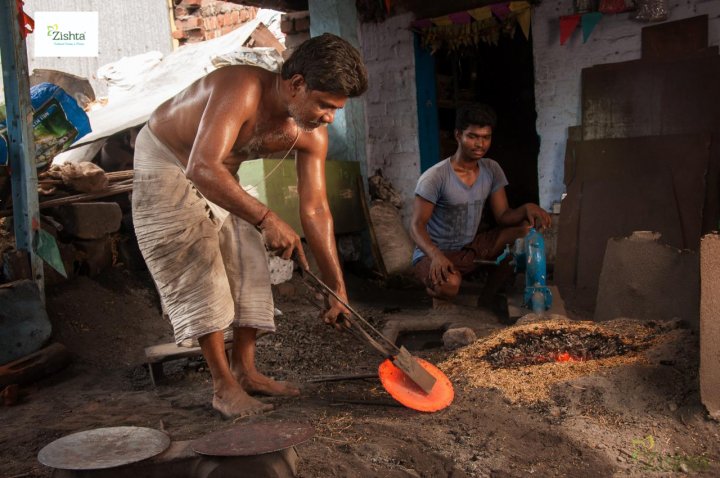
Interviewer BP Guide
Co-founder, Zishta Varishta Sampath
We do not have hundreds of products in stock. We wish we could see that day, and we could if we worked with products that we rejected which is what is being supplied across the country unfortunately. We will not do that. For us our value system is that if we can’t do good then let’s at least not harm anyone, let’s not do the business.
Interviewer BP Guide
Co-founder, Zishta Varishta Sampath
Then came the concept of health. Over the next two years we saw a mixed segment of buyers. There was a lot of awareness being created and people wanted to buy for health reasons. It didn’t matter if the cast iron was of good or bad quality, they wanted to do away with non-stick. Recently, in the last one year, there is a sudden awareness of sustainability. These buyers are few but there is an awareness being created through them.
What You Should Buy from Zishta
Zishta offers a variety of traditional cookware and utensils. We have put together a list of a few highly useful products for your kitchen.
Neem Wood Kitchen Set
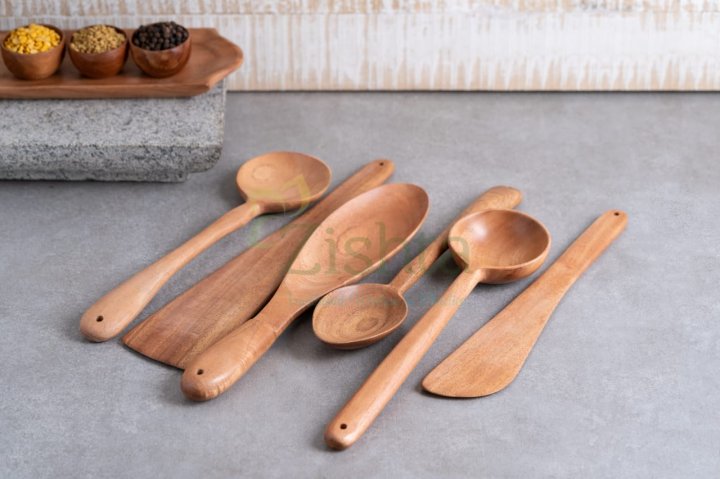
Zishta offers a set of very high quality, heat and scratch resistant ladels, masala spoons and chopping board. This set is made of neem wood, that has anti-baterial properties and has been carefully handcrafted by artisans in West Bengal and undergoes seasoning and treatment process. For Rs. 2550, you can get a set of 1 Chopping Board, 1 Dal ladle, 1 Curry Ladle, 1 Rice ladle, 1 Sambhar ladle, Set of 6 Spice Spoons and Set of 6 Masala Spoons. Get your own set here.
Manipur Black Pottery Tea Set
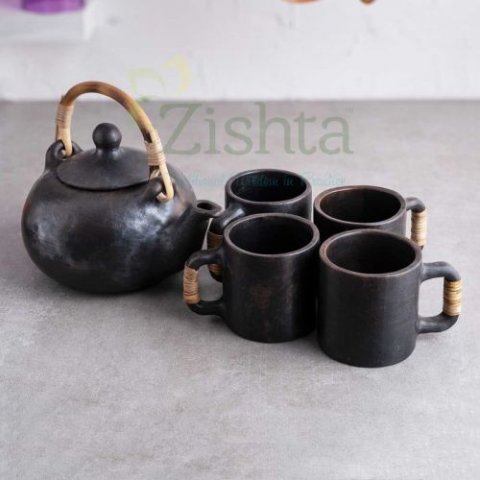
Tea is the most popular beverage in India. Almost all of us begin our day with a cup of chai. Zishta recommends Manipuri Black Pottery kettle and tea cups for your kitchen. This beautiful tea set is sure to keep your tea hotter for longer apart from giving it a unique aroma. Bring home this classy tea-set consisting of a kettle and 4 cups for Rs. 3200 from here.
Copper Water Pot With Cup
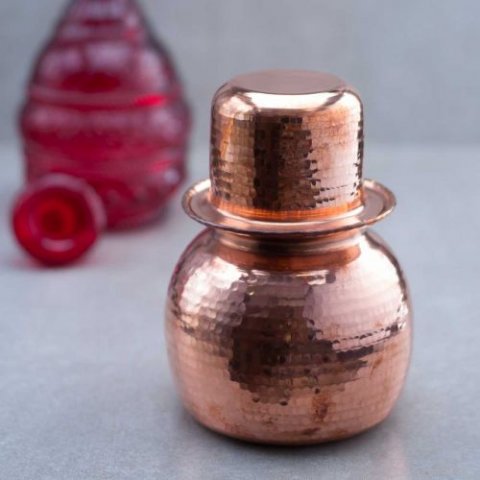
Handmade by artisans in Maharashtra, this water pot is made with the best quality copper and offers numerous health benefits associated with it. Zishta recommends storing water for atleast 4 hours in the copper pot before drinking it. Look no further if you have been looking for a pure copper water pot. You can buy a set of water pot and cup from Zishta's website for Rs.2050.
Brass Coffee Filter Medium & Davara Tumbler Combo
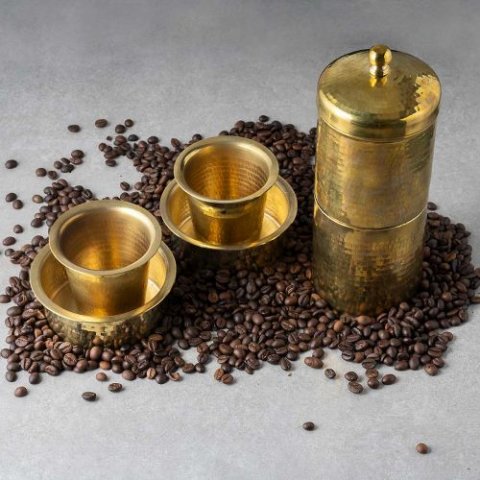
It does not matter which part of India you belong to, filter coffee is enjoyed by all. Coffee lovers can now enjoy their favorite beverage without worrying about acidity as the alkaline content of brass takes care of it. Made of highest quality brass, this coffee filter medium and tumbler combo is a must for every kitchen. For Rs. 3750, you can buy your own set here.
Other Products Also Worth a Look!
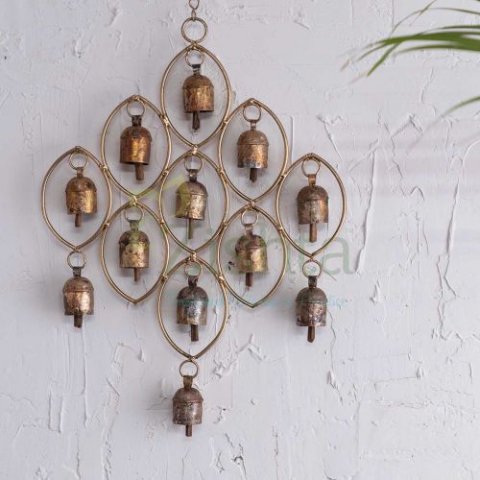
- Copper Coated Iron Chimes: The pleasant sound of these iron bells brings about calmness and are pretty to behold as well. You can buy this beautiful hanging for your home at Rs. 1490
- Drum Shape- Assam Cane Furniture - Seating Stool: Strong, durable and sustainable, the history of these cane stools goes as far back as 2nd Century AD! These versatile stools will be a perfect addition to any part of your house. Get them now for Rs. 2900.
- Kansa / Bronze Dinner Plate Set: A traditional meal would be best eaten in traditional plates. These plates are built to last. A set of Kansa plate, 3 sabzi bowls and a Kansa glass is available for Rs. 9300.
Where Can You Find Them?
www.zishta.com
Making the Switch to Traditional Cookware
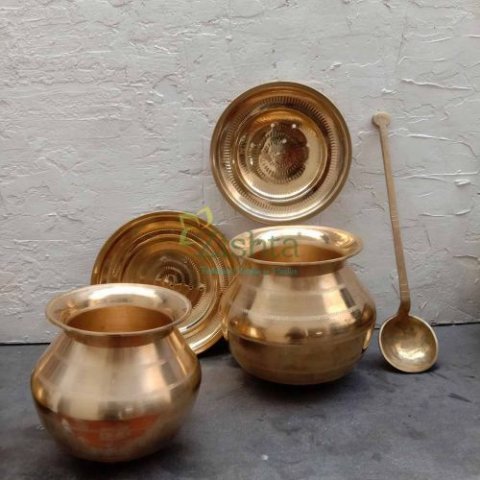
Interviewer BP Guide
Co-founder, Zishta Varishta Sampath
Today our kitchen is filled with cookware and it is overwhelming to think about replacing all 25 vessels with something in iron, brass or stoneware. Where would you start, how to use and clean it, where to store it? It can be very scary. Start with four, get comfortable and then by habit, you will know which is your next one and what you want to do and try after that.
What utensils an average Indian kitchen needs:
- Tava: In any Indian household, a tava is the most important, be it your breakfast, lunch or dinner. In some form the tava gets used throughout the week. In any culture across India, a tava becomes an integral part of the culture.
- Kadai: without kadai, we cannot make our sabjis which are an integral part of what we cook either in breakfast, lunch or dinner. It could be dry sabji, poori sabji, or any other form.
- Topia: the taller pot, which is a little more vertical and is used for gravies. In any house you would make a gravy, in the south you would make sambhar or rasam and in the northern part of the country you would make dal or a gravy.
- Rice pot: number four is the pot for making pongal, biryani, rice etc. Ideally this pot shape is best had in bronze or brass.
- Fifth cookware: for a family in Kerala, appam is cooked four times in a week and an appam pan will cover 90 per cent of the cooking. Culturally this can be any other dish made often.
- Sixth cookware, if you are having idli six days in a week, then it would be an idli vessel.
- Seventh utensil is again a very cultural thing depending on the way you cook, like dum cooking. The seventh cookware takes care of almost all the cooking. All you need to do is vary your sizes, for example for making sabji you may need a larger kadai and for making poori a smaller one. You may want to look at one or two sizes in some of the vessels. That’s all one needs to do.
Interviewer BP Guide
Co-founder, Zishta Varishta Sampath
The third one is the taller part for cooking gravies, I would always recommend earthen, which can be soapstone or clay or Manipuri black pottery. The reason for recommending earthen is that here you have no restrictions on what you can add to it. Metals are not ideal for citric food and since most of our gravies are little acidic, high in tomatoes and tamarind, the metal will have to be treated. Kalai has to be done on brass vessels, which erodes in 2-3 years and has to be redone. So, from a convenience perspective, earthen materials are the best.
Benefits of Cooking in Traditional Vessels
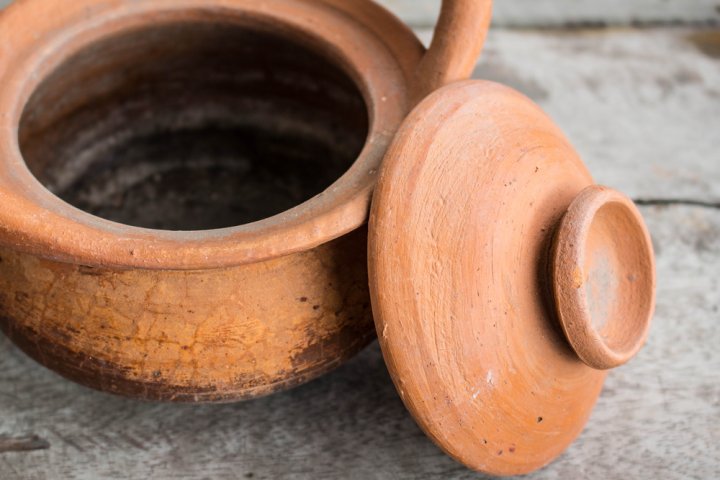
The barrier to moving into a traditional kitchen is the concern that it is complicated. I just wanted to say a few things.
- Adds essential minerals to food
If someone is very health conscious then the number one benefit is that it renders minerals into the food you cook. Soapstone is rich in calcium, clay is rich in magnesium, iron and cast iron is rich in iron. It adds natural minerals to your body. - Retains nutrition
Number two is that these cookware retain 90-98% of the nutrients and micro-nutrients. What’s the point of buying organic vegetables and then cooking them in non-stick when you lose all the nutrients and have harmed your vegetables. Imagine retaining 90-98% of the nutrients in your cooking in the vessel. - Kills harmful germs
Number three is that most of these cookware are known for killing harmful germs. These are the top three health reasons. - Taste and aroma
If somebody is not interested in health, then traditional cookware renders fantastic taste and aroma to whatever food you cook. Somebody who is a foodie will fall in love with food cooked in traditional cookware. - Fuel efficient
If that’s not motivational enough, traditional cookware saves fuel. You cook any dish in 15% less time. If I make sambhar in 35-40 minutes, today it takes me 25 minutes. If I used to make rasam in 20 minutes, today I make it in 13 minutes. I am very data oriented so I have timed it in multiple cases and noted it down, and this data is based on 25 times. It is fuel efficient. If you don’t want anything then look for fuel efficiency.
The Zishta Team and Future Plans
Interviewer BP Guide
Co-founder, Zishta Varishta Sampath
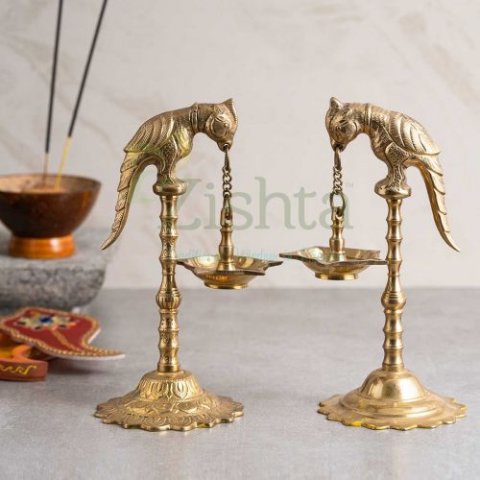
Interviewer BP Guide
Co-founder, Zishta Varishta Sampath
An example of the importance of revival is that one of the artisans who used to work out of a very small hut which was a foundry, now has a three-storey building and has acquired 2 other places and he has expanded his place. His business was 4.5 Lakhs and now he gets ten times more through us, and there are many more like him.
There are children of many artisans who had said they won’t do the same work, three such boys have already come back after completing engineering and said that they want to continue their fathers’ business and asked for our help. And we can work with the next generation in new ways - because they are engineers, we tell them that the property of stone is to retain temperature, why not look at other properties and let’s design it together, and not only for Zishta.
Interviewer BP Guide
Co-founder, Zishta Varishta Sampath
The impact is about more than just cost price and selling price. Take artisans in Kutch for example who depend on tourism and events in other cities. For 15 months both of these have not been possible, but they survive because of this work. They have a lot of pride and for their work, they will not take charity. You cannot make a difference in their life by suddenly offering a price of Rs.5000 instead of Rs.500, that’s not how it works. It is about looking at them holistically, ensuring that we are taking care of their survival continuously.
-
 10 Exquisite Pongal Rangoli Designs to Celebrate the Harvest Festival With and Why You Should Practice This Ancient Art (2020)
10 Exquisite Pongal Rangoli Designs to Celebrate the Harvest Festival With and Why You Should Practice This Ancient Art (2020)
-
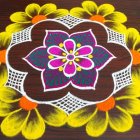 Need Some Help with Your Rangoli? Choose from These Amazing Makar Sankranti Rangoli Designs That Come with Useful Tips to Make Even Complicated Designs Seem Easy
Need Some Help with Your Rangoli? Choose from These Amazing Makar Sankranti Rangoli Designs That Come with Useful Tips to Make Even Complicated Designs Seem Easy
-
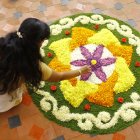 10 Heart Winning Onam Rangoli Designs to Adorn Your Homes This Onam (2020)
10 Heart Winning Onam Rangoli Designs to Adorn Your Homes This Onam (2020)
-
 Buy Authentic Handmade Table Décor Products and in Turn Support India’s Traditional Handicrafts and the Artisans Keeping Them Alive (2021)
Buy Authentic Handmade Table Décor Products and in Turn Support India’s Traditional Handicrafts and the Artisans Keeping Them Alive (2021)
-
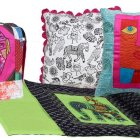 Handmade Gifts are the Best Kind As Each Piece Will Be Unique. But Better Yet are Handcrafted Gifts That Come with a Social Purpose (2021)
Handmade Gifts are the Best Kind As Each Piece Will Be Unique. But Better Yet are Handcrafted Gifts That Come with a Social Purpose (2021)


 Highlight the Best Facets of Your Incomparable Beauty: Discover the Best Face Highlighter Currently Available in India and Everything You Need to Know About Using Face Highlighters for Maximum Effect (2023)
Highlight the Best Facets of Your Incomparable Beauty: Discover the Best Face Highlighter Currently Available in India and Everything You Need to Know About Using Face Highlighters for Maximum Effect (2023)
 Forget the Blemishes and Get that Picture Perfect Flawless Radiance on Your Face: Check out the Best Foundations for Oily Skin Currently Available in India and Everything You Need to Know About Makeup Foundations (2023)
Forget the Blemishes and Get that Picture Perfect Flawless Radiance on Your Face: Check out the Best Foundations for Oily Skin Currently Available in India and Everything You Need to Know About Makeup Foundations (2023)
 Make Your Presence Felt Wherever You Go: Discover the Best Perfumes Under 2000 for Both Men and Women to Announce Your Arrival and Make Any Occasion Memorable (2023)
Make Your Presence Felt Wherever You Go: Discover the Best Perfumes Under 2000 for Both Men and Women to Announce Your Arrival and Make Any Occasion Memorable (2023)
 Protect Your Oily Skin from the Harmful Rays of the Sun: Discover the Best Gel Based Sunscreens for Oily Skin and Everything You Need to Know Before Buying One (2023)
Protect Your Oily Skin from the Harmful Rays of the Sun: Discover the Best Gel Based Sunscreens for Oily Skin and Everything You Need to Know Before Buying One (2023)
 Minor Blemishes and Wrinkles Affecting Your Confidence? Check out the Best BB Creams to Conceal Your Worries and Nourish Your Skin to Restore the Healthy, Radiant and Glowing Complexion Back Again (2023)
Minor Blemishes and Wrinkles Affecting Your Confidence? Check out the Best BB Creams to Conceal Your Worries and Nourish Your Skin to Restore the Healthy, Radiant and Glowing Complexion Back Again (2023)

Interviewer BP Guide